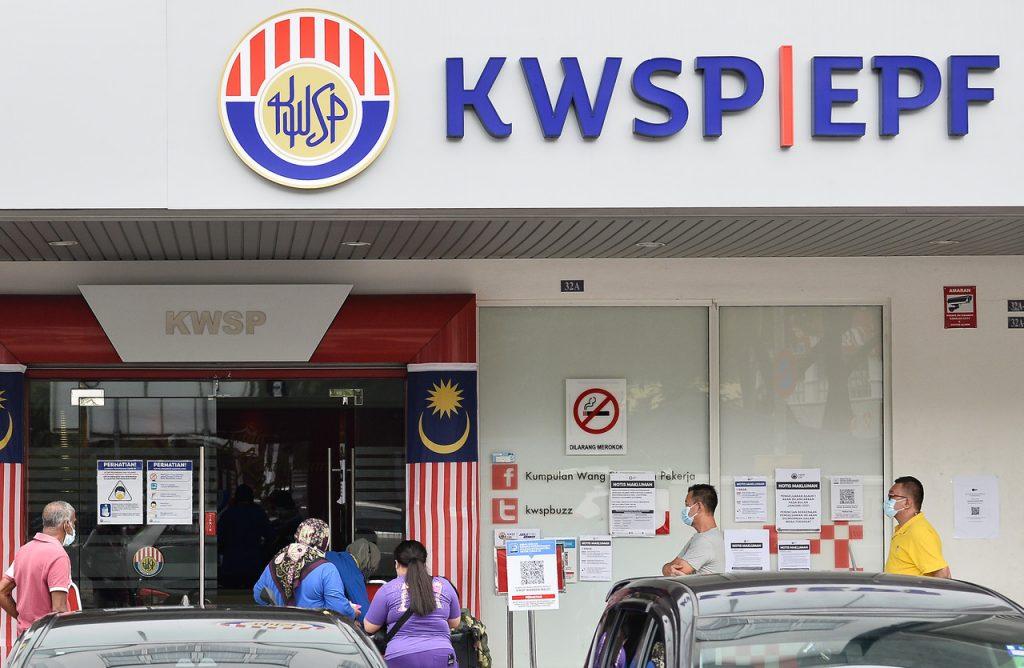EPF withdrawals going to non-emergency spending too, survey shows
Electronic gadgets and investment in gold and stocks are some of the other matters on which people are spending.
While a sizeable number of those withdrawing from their EPF Account 1 under the government’s i-Sinar programme are using the money for essential matters such as the repayment of monthly instalments and the purchase of food and groceries, many are also spending on items seen as non-critical such as electronic gadgets or investing the funds in gold or stocks, a new survey shows.
The results of the survey by the UCSI Poll Research Centre, released today, show that 34.9% of respondents used their withdrawals for investment purposes while 32% spent the money on home repairs or minor renovations.
Just over 24% said they used the money to purchase gadgets, phones or computers while 18.4% said they saved the money in their bank accounts.
In terms of essential matters, 55.5% used their withdrawals to repay monthly instalments while 48.6% used the funds to purchase food and groceries.
The i-Sinar programme is an extension of the government’s i-Lestari programme which allows a monthly withdrawal of up to RM500 from Account 2.
Under the initiative, EPF contributors have access to up to 10% of their savings in Account 1 as long as they have a minimum balance of RM100.
Finance Minister Tengku Zafrul Aziz told the Dewan Rakyat in November last year that the programme would benefit some eight million EPF contributors and involve about RM70 billion from the retirement fund.
Some 68% of respondents in UCSI’s survey titled “The Helpfulness of i-Sinar Scheme to You” said the programme was useful in helping with financial difficulties.
Nearly 21% said it was somewhat useful while just under 11% said it was not useful.
The survey was conducted among 809 participants who had withdrawn from or planned to participate in the i-Sinar scheme.
Just under 60% – 59.9% – of those aged 26 to 39 said they used the money to repay monthly instalments while a similar number – 59.2% – of those aged 40 to 55 said the same, compared to 47.7% of those aged 56 and above.
A total of 47.7% respondents aged 26 to 39 said they used the money for food and groceries, compared to 60.2% of those aged 40 to 55 and 59.1% of those aged 56 and above.
Only 28.9% of those aged 26 to 39 said they used the money for investment, compared to 41.4% of those aged 40 to 55 and 18.2% of those aged 56 and above.
In terms of household income, the M40 group had the highest number of respondents – 65.8% – using withdrawals for the repayment of instalments versus 53.3% from the B40 group and 31.8% from the T20 group.
The M40 group also had the highest number of respondents – 56.6% – using the money for food and groceries compared to 46.7% from the B40 group and 31.8% from the T20 group. For investments, meanwhile, the T20 group had the most respondents at 47.7% compared to 35.3% from the B40 group and 31.1% from the M40.
In terms of area of residence, 51.9% of respondents from urban areas said they used the money for monthly repayments compared to 59.7% from semi-urban areas and 57.7% from rural areas.
44% of urban dwellers used the money for food and groceries compared to 50.9% from semi-urban areas and 64.4% from rural areas.
In terms of investments, 38% of respondents from urban areas said they used the money for this purpose compared to 33.3% from semi-urban areas and 23.3% from rural areas.
Subscribe to our newsletter
To be updated with all the latest news and analyses daily.
